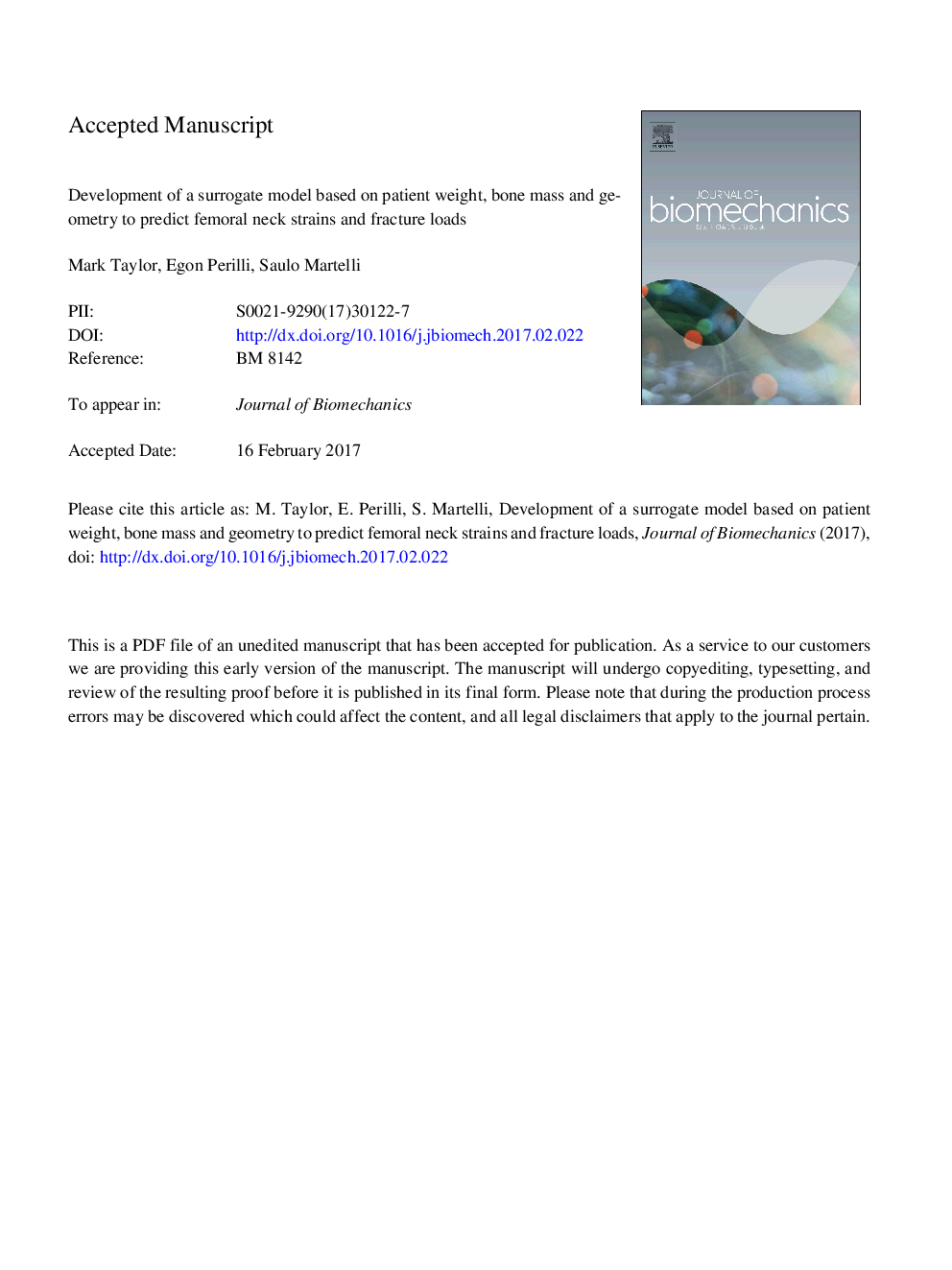| Article ID | Journal | Published Year | Pages | File Type |
|---|---|---|---|---|
| 5032108 | Journal of Biomechanics | 2017 | 24 Pages |
Abstract
The surrogate model successfully predicted strains estimated by FE (r2Â =Â 0.90-0.98 for level gait load case, r2Â =Â 0.92-0.96 for the fall load case). Moreover, an ANN model based on three measurements obtainable in clinics (femoral neck length (level gait) or maximum femoral neck diameter (fall), femoral neck bone mass, body weight) was able to give reasonable predictions (r2Â =Â 0.84-0.94) for all of the strain metrics and the estimated femoral neck fracture load. Overall, the surrogate model has potential for clinical applications as they are based on simple measures of geometry and bone mass which can be derived from DEXA images, accurately predicting FE model outcomes, with advantages over FE models as they are quicker and easier to perform.
Related Topics
Physical Sciences and Engineering
Engineering
Biomedical Engineering
Authors
Mark Taylor, Egon Perilli, Saulo Martelli,
